May 7, 2020Four steps to better yields in tomato, pepper and melon crops
(Sponsored) Growing row crops like tomato, pepper and cucurbits is a difficult job, with yield strongly affected by growing conditions. Nutrition has the potential to increase yield, but get it wrong and yield and quality can be reduced.
 Here David Marks of Levity Crop Science discusses how good understanding of plant physiology can teach us how to use fertilizers better and how this can drive improvements in yield and quality. Let’s start by identifying four key targets for getting high production:
Here David Marks of Levity Crop Science discusses how good understanding of plant physiology can teach us how to use fertilizers better and how this can drive improvements in yield and quality. Let’s start by identifying four key targets for getting high production:
- Good establishment
- Managing growth habit
- Setting and holding fruit
- Reducing stress
Establishment
Getting a crop off to a good start can have a dramatic effect on yield potential, young plants (especially when transplanted) are highly susceptible to stress until a good root system is established. Cell Power® SizeN® Ca contains amine N stabilized using Levity’s LimiN technology, this holds the N in a form that gives good rooting, allowing row crops to develop a strong even stand.
Growth habit
Once a crop is well established and has an even size distribution, we need to build canopy, but use too much conventional nitrogen can result in leggy plants with excess vegetative growth. Here we need to understand the effect of N form on plant architecture.
Nitrates are processed in the leaf and encourage a build up of the growth hormone auxin, other forms of nitrogen like amine do not promote auxin production and instead encourage cytokinin production leading to a different growth habit. Unfortunately, farmers gain no advantage from using different N forms from conventional fertilizer as N is unstable in the environment and taken up predominantly as nitrate regardless of the form it was applied as.
Cell Power® SizeN® products use a chemistry developed by Levity Crop Science to stabilize N in the amine form, which allows farmers to improve growth portioning whereby the crop invests more of its growth in reproductive growth and less in vegetative growth. So what does this mean from a practical perspective? Let’s look at an experiment on pepper (Fig. 1).
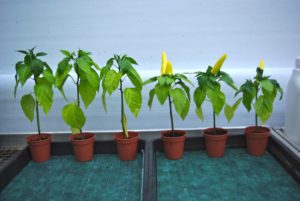
Here we see how nitrates encourage investment in vegetative growth giving taller ‘leggy’ plants, but the same quantity of N supplied by Cell Power® SizeN® produces shorter plants with more investment in fruit production.
In field experiments in Spain on cucumber Lono (Cell Power® SizeN®) reduces internode distance (bushier habit), impacting positively on fruit number, fruit size, and total yield. The same principle applies to tomato, pepper, melon, eggplant where Cell Power® SizeN® has been of great benefit to growers around the world.
Setting and holding fruit
The third key to good yields in tomato, pepper, and cucurbit crops is making sure that flowers turn into fruit. To ensure good setting and fruit holding growers need to get calcium inputs right. Most growers use too much calcium, but still struggle to get enough into the crop in the right place at the right time to prevent problems.
There is a short window of opportunity to use conventional foliar calcium products on fruit, as calcium transport is dependent on polar auxin transport. This means that parts of plants high in auxin can absorb calcium easily, but parts of plants low in auxin struggle to absorb calcium. Flowers have a short period of high auxin synthesis, and fruit only have high levels when very small (0-5mm) and cells are dividing. This makes application of calcium hit and miss, with some fruit and flowers absorbing it and some not.
Cell Power® Calcium Gold and Cell Power® Calcium Platinum in the USA, uses a technology developed by Levity Crop Science that helps parts of crops less able to absorb Ca to take it in normally. In tomato and other row crops it an increase setting and fruit holding allowing crops to reach a higher potential yield.
Reducing stress
The final key to great row crop production is managing stress. Crops that can cope with stress produce higher yields and have improved quality. Cell Power® SizeN® is proven to improve plant growth during stressful growing conditions, making it a big hit in arid and semi arid regions. Here we show results from studies at Myerscough University College (UK) looking at how Cell Power® SizeN® Ca improves tomato yield during salinity stress.
Cell Power® SizeN® has been shown to help a wide range of crops cope with harsh growing conditions in many parts of the world. It gives strong root development, and improved photosynthesis which are key to keeping crops green and productive in stress conditions.
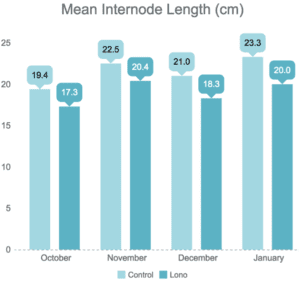
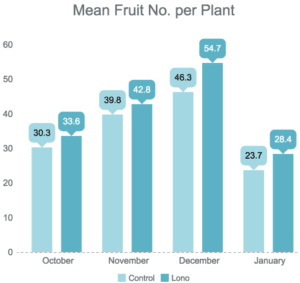
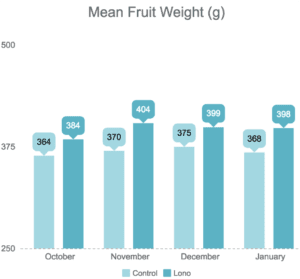
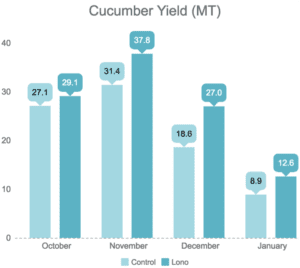
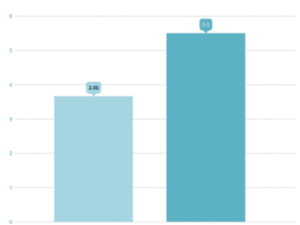
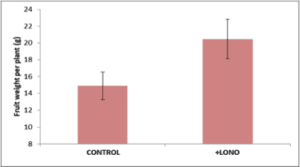
For more information, visit www.omexusa.com or call 559-661-6138.
© 2019 OMEX®
















